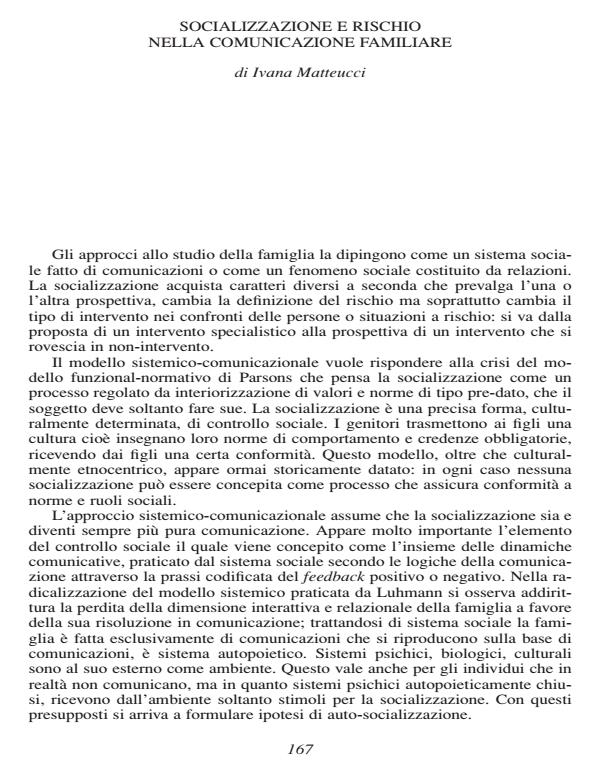Socializzazione e rischio nella comunicazione familiare
Titolo Rivista SOCIOLOGIA DELLA COMUNICAZIONE
Autori/Curatori Ivana Matteucci
Anno di pubblicazione 1 Fascicolo 2000/30 Lingua Italiano
Numero pagine 14 P. Dimensione file 64 KB
DOI
Il DOI è il codice a barre della proprietà intellettuale: per saperne di più
clicca qui
Qui sotto puoi vedere in anteprima la prima pagina di questo articolo.
Se questo articolo ti interessa, lo puoi acquistare (e scaricare in formato pdf) seguendo le facili indicazioni per acquistare il download credit. Acquista Download Credits per scaricare questo Articolo in formato PDF

FrancoAngeli è membro della Publishers International Linking Association, Inc (PILA)associazione indipendente e non profit per facilitare (attraverso i servizi tecnologici implementati da CrossRef.org) l’accesso degli studiosi ai contenuti digitali nelle pubblicazioni professionali e scientifiche
The family has been outlined as a communication system or a social phenomenon made up by relationships. The socialization takes different features depending on the first prospective prevails or the second; the definition of risk changes and above all the type of intervention on people or situations in danger: the range is from a specialistic intervention to an intervention that turns in a non-intervention. How to face the risks linked to the socialization in a complex society? Probably keeping up and strengthening the possibility of the family socialisation through hypothesis of communicability, that is in situations of mutual adaptation where every interlocutor takes part in the other people’s system of reference without leaving his/hers. Today the risk is linked to an impoverishment of the relationship which becomes ineffective, contradictory, deferred, diluted in the general verbal circulation. How the effects of the relationship can be kept up and correctly assessed? With reference to the test theory, the problem occurs when the interlocutive relationship becomes as precarious as the author-reader relationship. In this case the problem is: how the relationship can be kept up into the text which is a codified, dislocated, remote communication? The answer could be: giving back to the textual communication what has been missed in the structuralist approach: the reader. The reader is who must be added to the text to win the perturbation that he/she represents in the textual communication. Any author always looks at a wide audience through someone who is related with him/her. If the relational approach can be profitably accepted in the socialization theory and in the text theory, the orientation to the other people must particularly lead every intervention towards persons and texts, which talk with us as a "you" would talk with everybody.;
Ivana Matteucci, Socializzazione e rischio nella comunicazione familiare in "SOCIOLOGIA DELLA COMUNICAZIONE " 30/2000, pp , DOI: